| Hanuman | |
|---|---|
| Bhakti and Protector of Devotees | |
 Hanuman painted in Pahari style | |
| Affiliation |
Deva Devotee of Sita and Rama, Avatar of Shiva |
| Abode | Earth (Prithvi) |
| Mantra | Om Hanumante Namah |
| Weapon | Gada (mace) |
| Texts | Ramayana, Ramcharitmanas, Hanuman Chalisa, Bajrang Baan |
| Personal information | |
| Born |
Anjaneri, India |
| Parents |
|
Hanuman (/?h?n??m??n/; IAST: Hanum?n, Sanskrit: ???????) is an ardent devotee of Lord Rama and one of the central characters in the various versions of the epic Ramayana found in the Indian subcontinent and Southeast Asia. As one of the Chiranjivi, he is also mentioned in several other texts, such as the Mahabharata, the various Puranas and some Jain, Buddhist, and Sikh texts. Several later texts also present him as an incarnation of Shiva. Hanuman is the son of Anjana and Kesari and is also son of the wind-god Vayu, who according to several stories, played a role in his birth.
His theological origins in Hinduism are unclear. Alternate theories include him having ancient roots, being a non-Aryan deity who was Sanskritized by the Vedic Aryans, or that he is a fusion deity who emerged in literary works from folk Yaksha protector deities and theological symbolism.:39–40
While Hanuman is one of the central characters in the ancient Hindu epic Ramayana, the evidence of devotional worship to him is missing in the texts and archeological sites of ancient and most of the medieval period. According to Philip Lutgendorf, an American Indologist known for his studies on Hanuman, the theological significance and devotional dedication to Hanuman emerged about 1,000 years after the composition of the Ramayana, in the 2nd millennium CE, after the arrival of Islamic rule in the Indian subcontinent. Bhakti movement saints such as Samarth Ramdas expressed Hanuman as a symbol of nationalism and resistance to persecution. In the modern era, his iconography and temples have been increasingly common. He is viewed as the ideal combination of "strength, heroic initiative and assertive excellence" and "loving, emotional devotion to his personal god Rama", as Shakti and Bhakti. In later literature, he has been the patron god of martial arts such as wrestling, acrobatics, as well as meditation and diligent scholarship. He symbolizes the human excellences of inner self-control, faith and service to a cause, hidden behind the first impressions of a being who looks like a monkey.
Besides being a popular deity in Hinduism, Hanuman is also found in Jainism and Buddhism. He is also a legendary character in legends and arts found outside the Indian subcontinent such as in Myanmar, Thailand, Cambodia, Malaysia and Indonesia. Outside India, Hanuman shares many characteristics with the Hindu versions in India, but differs in others. He is heroic, brave and steadfastly chaste, much like in the Sanskrit tradition, but not celibate. He marries and has children in other cultures, as is the case in a few regional versions in India. Hanuman is stated by scholars to be the inspiration for the allegory-filled adventures of a monkey hero in the Xiyouji (Journey to the West) – the great Chinese poetic novel influenced by the travels of Buddhist monk Xuanzang (602–664 CE) to India.
Contents
Nomenclature
The meaning or the origin of word "Hanuman" is unclear. In the Hindu pantheon, deities typically have many synonymous names, each based on the noble characteristic or attribute or reminder of that deity's mythical deed.:31–32 Hanuman has many names like Maruti, Pawansuta, Bajrangbali, Mangalmurti but these names are rarely used. Hanuman is the common name of the vaanar (semi-ape, semi-man) god.
One interpretation of the term is that it means "one having a jaw (hanu) that is prominent (mant)". This version is supported by a Puranic legend wherein baby Hanuman mistakes the sun for a fruit, attempts to heroically reach it, is wounded and gets a disfigured jaw.:31–32
A second, less common interpretation is that the name derives from the Sanskrit words Han ("killed" or "destroyed") and maana (pride); the name implies "one whose pride was destroyed". This epithet resonates with the story in the Ramayana about his emotional devotion to Rama and Sita. He combines two of the most cherished traits in the Hindu bhakti-shakti worship traditions: "heroic, strong, assertive excellence" and "loving, emotional devotion to personal god".:31–32
A third conjecture is found in Jain texts. This version states that Hanuman spent his childhood on an island called Hanuruha, which served as the origin of his name.:189
Linguistic variations of "Hanuman" include Hanumat, Anuman (Tamil), Hanumantha (Kannada), Hanumanthudu (Telugu). Other names of Hanuman include:
- Anjaneya, Anjaniputra (Kannada), Anjaneyar (Tamil), Anjaneyudu (Telugu), Anjanisuta all meaning "the son of Hanuman's mother Anjana".
- Kesari Nandan, based on his father, which means "son of Kesari"
- Maruti, or the son of the wind god;
- Bajrang Bali, "the strong one (bali), who had limbs (anga) as hard as a vajra (bajra)"; this name is widely used in rural North India.:31–32
- Sang Kera Pemuja Dewa Rama, Hanuman, the Indonesian for "The mighty devotee of Rama, Hanuman"
- Sankata Mochana, the remover of dangers (sankata):31–32
Outside the Indian subcontinent, though his iconography and the details of his legends vary, his names are phonetic similar to the Indian version:
- Andaman, this name and Hanuman's mythology is behind the Indian islands in the Bay of Bengal called Andaman and Nicobar.
- Anoman (Javanese, Indonesia)
- Hanuman (Malaysia)
- Hanuman in Myanmar, Cambodia, Thailand, and Balinese Indonesia.
- Hunlaman (Lao)
Historical development
Vedic roots
The earliest mention of a divine monkey, interpreted by some scholars as the proto-Hanuman, is in hymn 10.86 of the Rigveda, dated to between 1500 and 1200 BCE. The twenty-three verses of the hymn are a metaphorical and riddle-filled legend. It is presented as a dialogue between multiple characters: the god Indra, his wife Indrani and an energetic monkey it refers to as Vrisakapi and his wife Kapi.:39–40 The hymn opens with Indrani complaining to Indra that some of the soma offerings for Indra have been allocated to the energetic and strong monkey, and the people are forgetting Indra. The king of the gods Indra responds by telling his wife that the living being (monkey) that bothers her is to be seen as a friend, and that they should make an effort to coexist peacefully. The hymn closes with all agreeing that they should come together in Indra's house and share the wealth of the offerings.:39–40
This hymn, which includes an explicit discussion of sex and differences between species, has been interpreted in a number of ways by contemporary scholars.:305 R.N. Dandekar states that it may metaphorically refer to another fertility god, while Wendy Doniger compares it to a horse sacrifice. Stephanie Jamison states that the hymn mentions a bull-monkey, a euphemism for a horse and fertility ritual, very different from the later era Hanuman. According to Philip Lutgendorf, there is "no convincing evidence for a monkey-worshipping cult in ancient India".
Tamil roots
The orientalist F. E. Pargiter (1852-1927) theorized that Hanuman was a proto-Dravidian deity.:40 According to this theory, the name "Hanuman" derives from the Tamil word for male monkey (ana-mandi), first transformed to "Anumant" – a name which remains in use. "Anumant", according to this hypothesis, was later Sanskritized to "Hanuman" because the ancient Aryans confronted with a popular monkey deity of ancient Dravidians coopted the concept and then Sanskritized it.:39–40 According to Murray Emeneau, known for his Tamil linguistic studies, this theory does not make sense because the Old Tamil word mandi in Ca?kam literature can only mean "female monkey", and Hanuman is male. Further, adds Emeneau, the compound ana-mandi makes no semantic sense in Tamil, which has well developed and sophisticated grammar and semantic rules. The "prominent jaw" etymology, according to Emeneau, is therefore plausible.:39–40
Epics and Puranas
Vanaranam naranam ca
kathamasit samagamah
Translation:
How can there be a
relationship between men and monkeys?
—Valmiki's Ramayana'
Sita's first meeting with Hanuman
(Translator: Philip Lutgendorf)
Hanuman is mentioned in both the Hindu epics, Ramayana and Mahabharata. A twentieth-century Jesuit missionary Camille Bulcke, in his Ramkatha: Utpatti Aur Vikas ("The tale of Rama: its origin and development"), proposed that Hanuman worship had its basis in the cults of aboriginal tribes of Central India.
Hanuman is mentioned in the Puranas. A medieval legend posited Hanuman as an avatar of the god Shiva by the 10th century CE (this development possibly started as early as in the 8th century CE). Hanuman is mentioned as an avatar of Shiva or Rudra in the medieval era Sanskrit texts like the Mahabhagvata Purana, the Skanda Purana, the Brhaddharma Purana and the Mahanataka among others. This development might have been a result of the Shavite attempts to insert their ishta devata (cherished deity) in the Vaishnavite texts.
Other mythologies, such as those found in South India, present Hanuman as a being who is the union of Shiva and Vishnu, or associated with the origin of Ayyappa. The 17th century Odia work Rasavinoda by Din
Watch movie Bajrangbali online on Amazon
Watch movie Bajrangbali online
Watch The Movie On PrimeAbdullah Full HD Movie Download
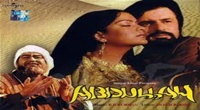
Prince (1969) Full HD Movie Download
.jpg)
Shatranj (1969) Full HD Movie Download
.jpg)
Khoon Khoon Full HD Movie Download

Diljala Full HD Movie Download
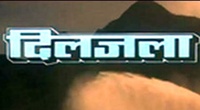
Banarsi Babu Full HD Movie Download
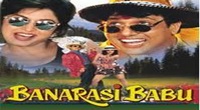
Fakira Full HD Movie Download

Kahaani Gudiya Ki Full HD Movie Download

Rahasyam Full HD Movie Download
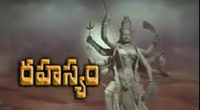
Amma Durgamma Full HD Movie Download
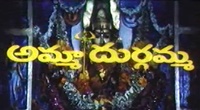
Meri Badle Ki Aag Full HD Movie Download

Aaj Ka Hindustani Full HD Movie Download
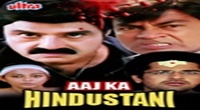
Kattumarakkaran Full HD Movie Download

Seven Full HD Movie Download

Allari Priyudu Full HD Movie Download

Bangaru Babu Full HD Movie Download
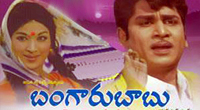
Dukanam Full HD Movie Download
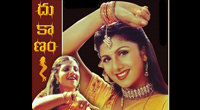
Nandha Full HD Movie Download

Neramu Siksha Full HD Movie Download

Main Awara Hoon Full HD Movie Download

Thoda Pyaar Thoda Magic Full HD Movie Download

Download latest Movie from bollywood
- 1> baaghi 3
- 2> THE SKY IS PINK MOVIE FULL STORY AND REVIEW
- 3> Luka Chuppi
- 4> TO ALL THE BOYS I’VE LOVED BEFORE
- 5> Kabir Singh
- 6> Street Dancer 3D
- 7> Simmba
- 8> Gone Girl
- 9> The Girl Who Lived
- 10> Ludo
- 11> DILWALE DULHANIA LE JAYENGE
- 12> GUILTY
- 13> The Godfather
- 14> Adventures of Rusty
- 15> Sooryavanshi
- 16> Satyameva Jayate 2
- 17> Thappad
- 18> Bhool Bhulaiyaa 2
- 19> KGFChapter 2
- 20> Mardaani 2
- 21> Pinjar
- 22> Shivaji maharaj
- 23> Ek Villian 2
- 24> Hungama 2
- 25> Divergent
- 26> Mumbai Saga
- 27> The Internship
- 28> HIT (telugu)
- 29> Panga
- 30> The perfect date
- 31> 16 December
- 32> Gopala Gopala (Telugu)
- 33> Brahmastra
- 34> Gangubai Kathiawadi
- 35> Manmadhudu
- 36> Nenu local
- 37> Mahanati
- 38> Shatamanam bavathi
- 39> Lagaan
- 40> After
- 41> MOM
- 42> Shamshera
- 43> Raguvaran BTech
- 44> Khakee
- 45> The villain
- 46> OM
- 47> Mr. perfect
- 48> Bueatifull mind
- 49> Hichki
- 50> Gabbar Singh
- 51> Jogi
- 52> Before Sunrise
- 53> Before Sunset
- 54> Before Midnight
- 55> The Big Bull
- 56> Top Gun: Maverick
- 57> The Purge
- 58> The Sky is Pink
- 59> Laxmmi Bomb
- 60> Sadak 2
- 61> Sufna
- 62> Prithviraj
- 63> PK
- 64> Coolie No 1(2020)
- 65> Black Widow
- 66> Dear Zindagi
- 67> Dil Bechara
- 68> PHIR HERA PHERI
- 69> WAR
- 70> Dostana
- 71> RRR: Roudram Ranam Rudhiram
- 72> Maidan
- 73> Dabbang 3
- 74> Chhalaang
- 75> life as we know it
- 76> SherShaah
- 77> Sandeep Aur Pinky Faraar
- 78> Event Horizon
- 79> 83
- 80> Radhe: Your Most Wanted Bhai
- 81> Gunjan Saxena: The Kargil Girl
- 82> Mr India
- 83> Vivah
- 84> Anokha Bandhan
- 85> Ghost
- 86> Bhoot: Part One - The Haunted Ship
- 87> Haseen Dilruba
- 88> Laal Singh Chaddha
- 89> Qismat
- 90> Rajput
- 91> Drive
- 92> Dil Chahta Hai
- 93> Dil Ki Baazi
- 94> Dil Ka Rishta
- 95> Teesri Manzil
- 96> Dil
- 97> Love Aaj Kal
- 98> Khaali Peeli
- 99> Bunty Aur Babli 2
- 100> Atrangi Re
- 101> Gulabo Sitabo
- 102> Jodi
- 103> Suraj Pe Mangal Bhari
- 104> Deewana
- 105> Attack
- 106> Sardar Udham Singh
- 107> Toofan
- 108> THE LOVEBIRDS
- 109> Jersey
- 110> Ginny Weds Sunny
- 111> Thalaivi
- 112> Shiddat
- 113> Angels vs Zombies
- 114> Koi Mil Gya
- 115> Thank God
- 116> Bhuj: The Pride of India
- 117> Hum Aapke Hain Kaun
- 118> The Platform
- 119> Bird Box
- 120> Roohi Afzana
- 121> Torbaaz
- 122> Nikamma
- 123> World War Z
- 124> Extraction
- 125> Train to Busan
- 126> Life of Pi
- 127> SHAADI MEIN JROOR AANA
- 128> Himmat Aur Mehnat
- 129> To All The Boys: P.S. I Still Love You
- 130> Mimi
- 131> Good Newwz
- 132> Shubh Mangal Zyada Saavdhan
- 133> Raabta
- 134> Harry Potter and the Philosopher's Stone
- 135> Harry Potter and the Chamber of Secrets
- 136> Chhapaak
- 137> War of the Worlds
- 138> Harry Potter and the Prisoner of Azkaban
- 139> Harry Potter and the Goblet of Fire
- 140> MURDER MYSTERY
- 141> Shakuntala Devi
- 142> Bachchan Pandey
- 143> Jayeshbhai Jordar
- 144> Sheer Qorma
- 145> Saina
- 146> 'O' Pushpa I hate tears
- 147> Kedarnath
- 148> MS Dhoni The Untold Story
- 149> Chhichhore
- 150> Badhaai Ho
- 151> Unstoppable
- 152> Oz the Great And Powerful
- 153> The Girl on the Train
- 154> Haathi Mere Saathi 2020
- 155> The Conjuring: The Devil Made Me Do It
- 156> Gandhi Se Pehle Gandhi
- 157> The Song of Scorpions
- 158> Srimanthudu
- 159> Hello Guru Prema Kosame
- 160> Beauty and The Beast
- 161> Black Panther
- 162> Charlie and the Chocolate Factory
- 163> Bole Chudiyan
- 164> Fidaa
- 165> Duvvada Jagannadham
- 166> Bruce Lee: The Fighter
- 167> Hyper
- 168> Yaara
- 169> Red (2020)
- 170> Shivam
- 171> That Is Mahalakshmi
- 172> Nishabdham
- 173> Aashram 2020 web series
- 174> Laxmii
- 175> Mismatched
- 176> STUDENT OF THE YEAR 2
- 177> NAIL POLISH
- 178> Ramprasad Ki Tehrvi
- 179> KAAGAZ
- 180> 12 o Clock
- 181> The Power
- 182> bolo hau
- 183> Tribhanga
- 184> JAMUN
- 185> Madam Chief Minister
- 186> Maasaab
- 187> Aadhaar
- 188> Tanhaji
- 189> Bhaagi 3
- 190> Bhootnath
- 191> MALANG
- 192> Jai Mummy Di
- 193> Haathi Mere Saathi 2021
- 194> Shakeela
- 195> Unpaused
- 196> Annayya
- 197> Vamsoddharakudu
- 198> Mrugaraju
- 199> Narasimha Naidu
- 200> Sankranti
- 201> Manasu Maata Vinadhu
- 202> Anjaane
- 203> Apaharan
- 204> Bachke Rehna Re Baba
- 205> Bewafaa
- 206> Roohi
- 207> Radhe
- 208> Zindagi Khoobsoorat Hai
- 209> Yeh Mohabbat Hai
- 210> Yeh Kya Ho Raha Hai?
- 211> The Tomorrow War
- 212> DehradunDiary
- 213> Meri Shaadi Karaoo
- 214> Matruu Ki Bijlee Ka Mandola
- 215> No One Killed Jesica
- 216> Aag Ka Goola
- 217> Eight Million Dollars
- 218> Three Hundred
- 219> Cats and Dog
- 220> Decoy
- 221> Gold Rush
- 222> You Have Got Mail
- 223> Final Destination three
- 224> Tofan
- 225> Jungle
